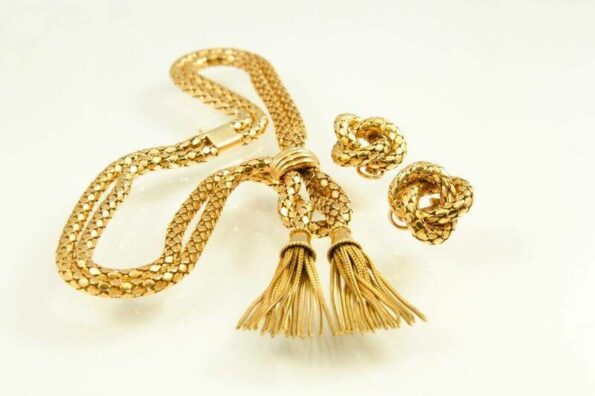Jewelry in 18K gold and 14K gold purity is one of the most popular precious metals, and the gold percentage is the key distinction between them. 14K jewelry comprises 58% gold and 75% alloyed metals, whereas 18K jewelry comprises 75% gold and 25% alloyed metals.
Silver, copper, nickel, and palladium are examples of alloyed metals. The color difference between 14K and 18K gold is very noticeable. Due to the alloys used, jewelry produced of 18K gold has a deep golden hue, while jewelry made of 14K gold has a softer tone.
Durability
Because 14K gold jewelry has more alloy, it is more rigid and durable. 14K is widely used in elaborate rings, such as engagement rings, due to its robustness. A robust metal for prongs, for example, will ensure that the diamond stays in place. 18K gold is preferred for older jewelry. This is because this metal scrapes so that it develops a patina (oxidation of metals that give the jewelry a rustic flair).
Lifestyle
Is 18K gold jewelry comparable to 14K gold jewelry? Not at all. As you can see, your decision will be influenced by a variety of things, including your lifestyle. Jewelry made of 14K gold is an excellent choice for persons who live an active lifestyle or work with their hands since it demonstrates strength and resilience. It’s also suitable for regular use. Delicate items made of 18-karat gold are an excellent investment if you only wear
exquisite jewelry on special occasions or significant events. These artworks are undoubtedly beautiful, despite their fragility.

Which is best for your skin’s sensitivity and tone? Is it better to wear 14k or 18k jewelry?
Gold is available in various hues, including yellow, white, and rose gold. To make white and yellow gold more durable, it is combined with other metals. White gold is created by combining metals of a white hue, such as nickel. Yellow gold, on the other hand, is made by keeping the metal’s inherent hue as much as possible. The difference between 14K and 18K yellow gold is minor in look. Both of these pieces of jewelry are amazing.
Choosing metals based on color is more a matter of personal taste or what individuals believe looks best on them. Yellow gold, on the other hand, appears to blend well with warm skin tones, and they also look great with brown, orange, yellow, and turquoise-colored gems and stones. Cooler skin tones and vivid stones like pink, red, and blue go well with white gold. So, if you’re on the fence about purchasing a red ruby ring set in gold, go for it.
Choose the thing that brings a smile to your face once more. Colors aren’t anything to be concerned about. After all, who doesn’t enjoy having a diverse collection? When it comes to skin sensitivity, it’s best to buy gold items with greater Karats if you’re prone to allergies. The lower the Karat, the higher the alloyed metal composition of the jewelry. Nickel, in particular, is a form of alloy that frequently produces allergic reactions on the skin. If you’re buying 14K gold, choose yellow or rose gold instead of white gold because they don’t usually include nickel.
Value
Because 14K contains less gold than 18K, it is also less expensive. However, the price of jewelry is influenced by a variety of factors. For example, if you pick a larger round diamond with a 14K gold
band for an engagement ring, you should expect to pay more than an 18K version with a smaller stone.
The difference between 18K and 14K gold jewelry is remarkable. You can’t claim one is better than the other because each has the characteristics that make it ideal for different lifestyles. We will provide you with jewelry that suits your skin and lifestyle more.


